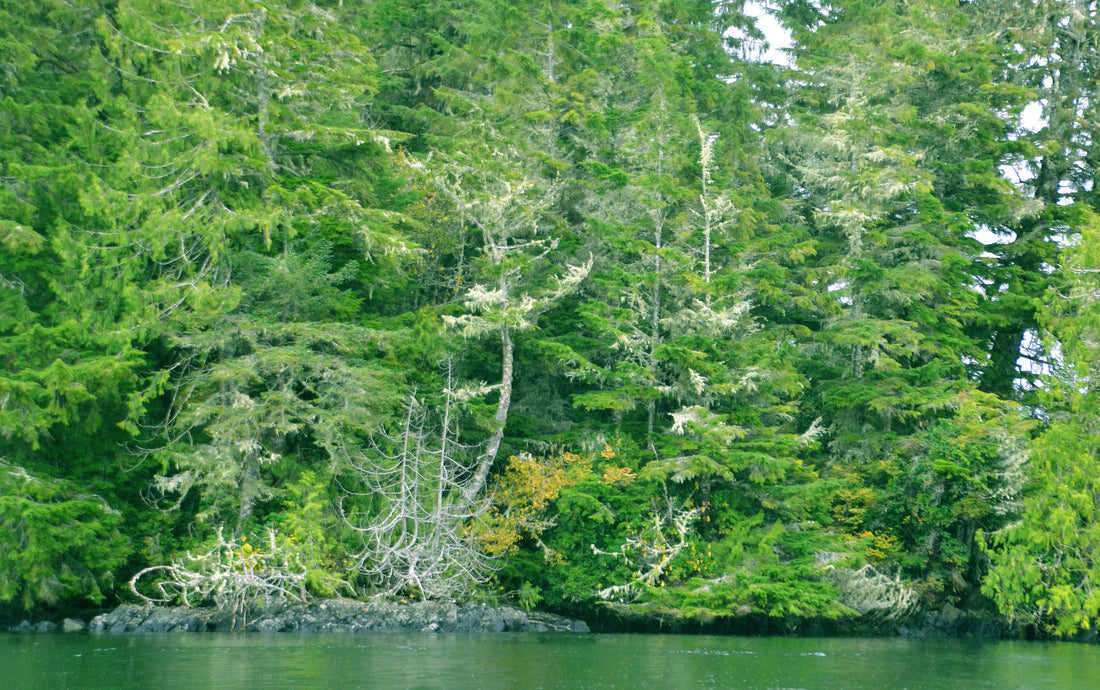
Field Visits and Artistic Inspiration
Share
The summer months of 2024 were a season of remarkable exploration and creative inspiration. I dedicated this time to field visits, retracing ancestral routes and connecting with sites rich in natural beauty and historical resonance. The experience was both a personal and artistic journey, deepening my appreciation for the landscapes that shaped my family's history on the west coast.
Iconic Locations: A Journey through Time and Space
Among the destinations were iconic sites like Hot Springs Cove in Hesquiaht and the awe-inspiring Nootka Sound, spanning from Zeballos to the tranquil cove of Nuchatlutz. Views of Estevan and Esperanza, imbued with family history as frequent fishing destinations for my ancestors, added profound meaning to the voyage.
The experience evoked a strong sense of continuity with my younger self. Decades had passed since my youthful deckhand days, yet the sensation of riding the sea returned effortlessly—like muscle memory. Whether navigating large ocean swells or the chaotic churn of side swells during tacking maneuvers, the rhythms of the water felt like an old, trusted companion.
 Esperanza Sunset
Esperanza Sunset
Hot Springs Cove: A Healing Connection
The boardwalk leading to the Hot Springs, significantly improved since my last visit 26 years ago, was a nostalgic passage. The springs themselves retained their restorative essence, leaving me refreshed and invigorated. The interplay of the open ocean’s power and the calming embrace of the springs highlighted the duality of this environment—both exhilarating and nurturing.

Hot Springs Cove Sketch
Artistic Observations and Reflections
Throughout these voyages, I sought to capture the essence of my surroundings through photography and quick sketches. However, the dynamic nature of the sea often compelled me to pause and simply immerse myself in the moment—feeling the weather, the wind, and the water. These moments mirrored the countless hours spent on my father’s fishing boat, gazing into the endless swells and pondering the depths of the ocean.
Interestingly, I noticed a shift in perspective tied to familiarity. In places I knew intimately, my focus naturally gravitated toward the micro details—the textures of a weathered dock, the interplay of light on the water, or the intricate patterns in the trees. Conversely, in locations I hadn’t visited in decades, my perspective expanded to the macro—the overarching landscapes, the grandeur of the experience, and the emotional resonance of returning after so many years.
The Literal Root Pieces: Integrating Nature into Art
During my exploratory walks along the beaches and through the forests this summer, I was captivated by the organic forms of driftwood and root fragments. These natural elements, shaped by wind, water, and time, carried a sculptural quality that I found deeply inspiring. Particularly striking were pieces that had a windblown, veining aesthetic—delicate bonsai-like branches that seemed to stretch out as if reaching for sustenance.
As I collected these fragments, I began to consider their potential as three-dimensional elements in my work. My vision was to integrate them into my sunset or ocean-scape paintings, where the roots could symbolize trees silhouetted against the sky. The concept felt natural and harmonious, connecting the raw physicality of nature with the more abstract and atmospheric qualities of my paintings.
In some cases, I ventured into hillsides during my site visits to find pieces that had naturally weathered and died, ensuring I disturbed no living plants. The organic forms of these fragments carried the history of their landscapes, imbuing them with a narrative element that mirrored the themes of The Missing Link.
To bring this concept to fruition, I began saving, drying out and then staining my favourite root clippings black, emphasizing their intricate forms and enhancing their visual contrast against the painted backgrounds. Each piece was paired with a painted sunset and/or ocean-scape, specifically designed to reflect the region from which the roots were gathered. West Coast Bonsai, Estevan Point, 2024
West Coast Bonsai, Estevan Point, 2024
The process required technical ingenuity. I constructed custom black frames to encase the works and devised a method to incorporate the roots into the final composition. After completing the painted background, I applied a layer of resin, which both enhanced the vibrancy of the painting and served as a bonding medium. With the resin still wet, I carefully positioned the frame with the attached roots over the artwork, allowing the resin to partially envelop the roots. Once cured, the resin not only secured the roots firmly in place but also added a dimensional quality and structural integrity to the piece.
This innovative fusion of organic material and traditional painting techniques gave rise to a series of works that are as much sculpture as they are painting. Each piece is a homage to the landscapes that inspired them, merging the literal with the interpretive, and the tangible with the ephemeral.
By incorporating the literal roots of the places I explored into the artwork, these pieces transcend their medium, offering viewers a layered experience that reflects both the physical beauty and the deeper connections to the environment(s) that define The Missing Link.
Inspiration for Future Work
These field visits provided not only inspiration but also a rich foundation for the pieces to come in my project, The Missing Link. Each location offered its own unique insights, encouraging a deeper engagement with both the physical and emotional landscapes. The juxtaposition of detailed familiarity and the awe of rediscovery has already begun to influence the narratives and compositions I plan to explore in my artwork.
The summer was a reminder of the profound connection between environment, memory, and creative expression. It affirmed that the act of revisiting familiar places can be as transformative as exploring new ones, particularly when seen through the lens of time and personal history.
